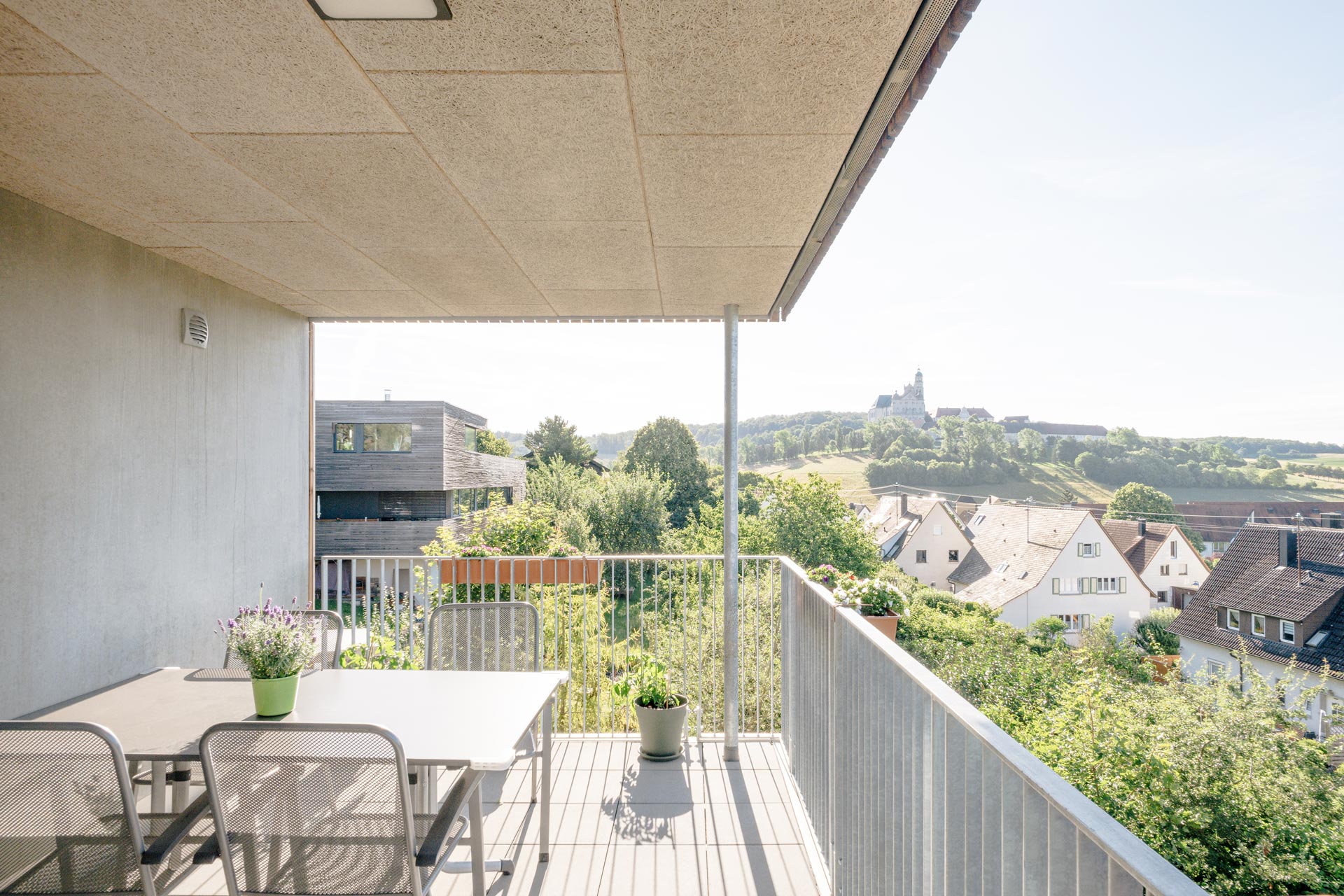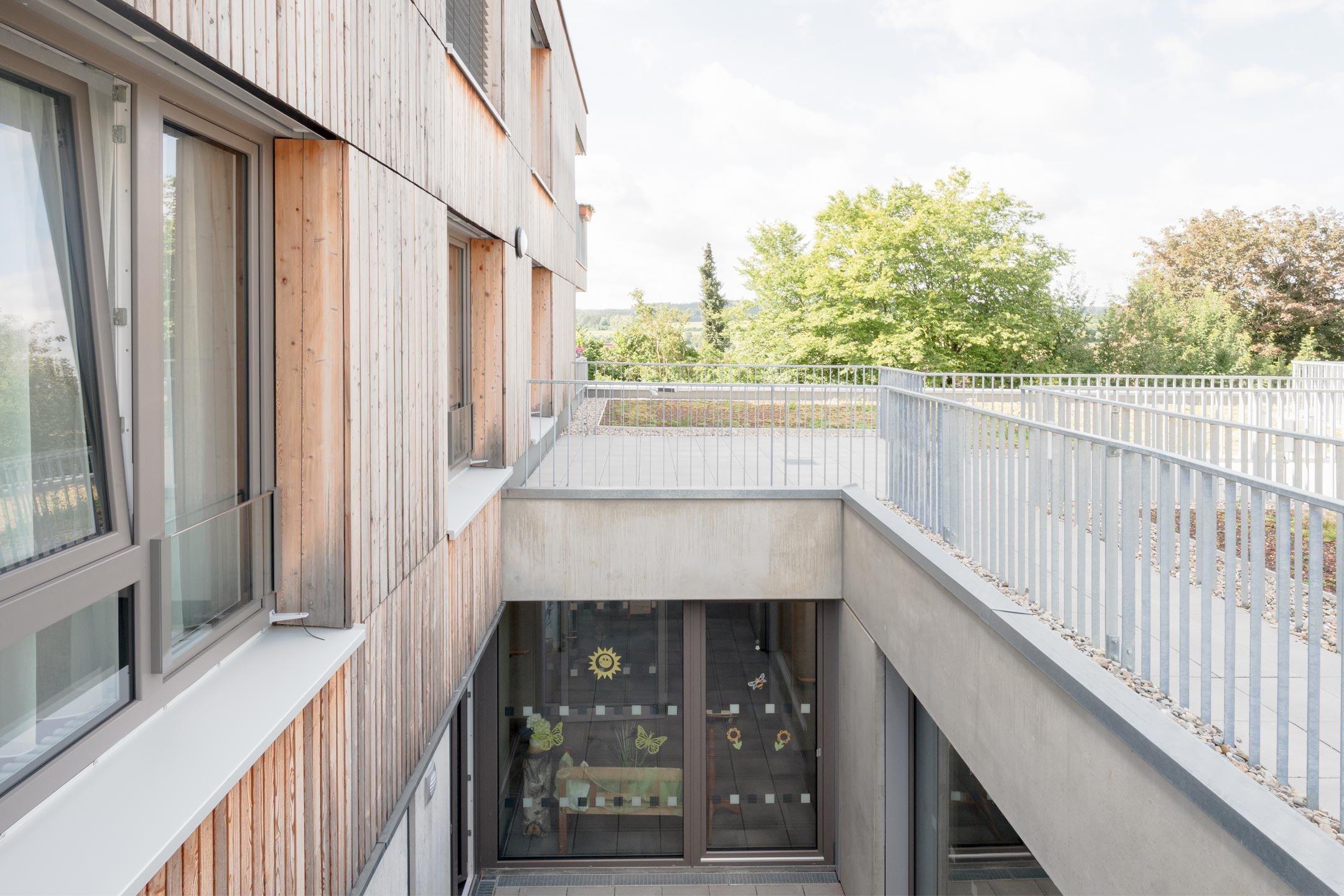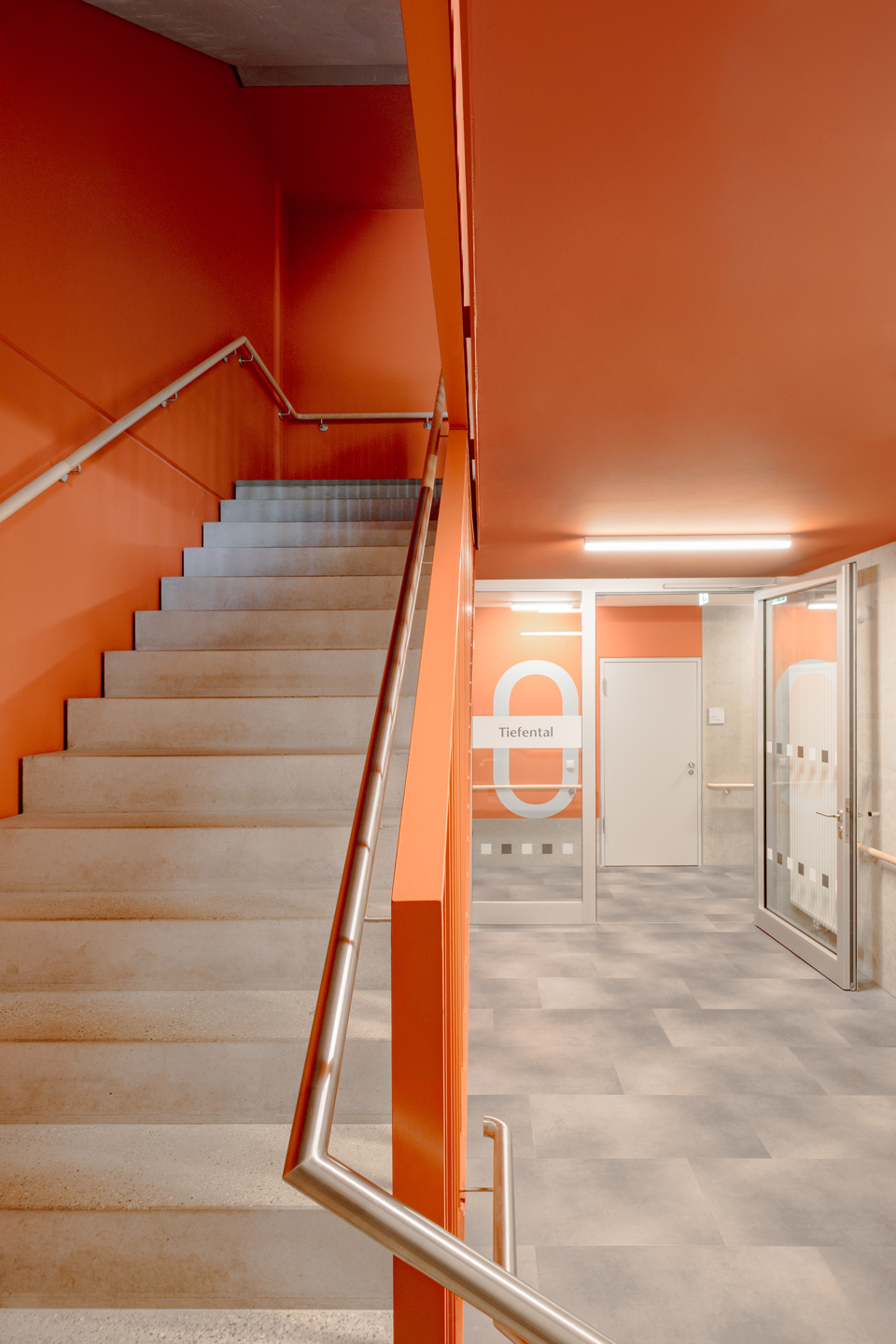Samariterstift, Neresheim, Allemagne

The goal of the concept for the new construction of a dormitory and workshop is to construct the buildings in a way that they can become neutral regarding their CO2 emissions. This means that CO2 which is inevitably released both by operation and construction (grey energy), can be compensated locally by generating power with photovoltaics. The balance is based on the fact that generation of energy that does not release CO2 avoids conventional power generation elsewhere and thus the emission of the climate-damaging gas in the corresponding amount.
Regarding the building material, the associated CO2 emissions were reduced by using less concrete: The living area is designed as a solid construction with a wooden parapet and the workshop also has less grey energy, as many of the outer walls and the roof are also made of timber.
The thermal comfort in the apartments and workshop is very good; passive strategies avoid the need for cooling. The peak temperatures reach 28°C of operative temperature in the apartments and 30°C in the canteen and workshop with only a few hours of excess in the year. This is made possible by ventilation at night in combination with the buffering thermal mass of the ceilings and walls in the apartments, as well as some interior walls in the workshop. Ventilation at night is done manually in the apartments, in the other areas by motorized drives. A good, externally mounted sun protection is provided for all areas.
In certain zones, such as the group room and common areas, a hybrid system provides fresh air, so basic mechanical ventilation is supplemented by shock ventilation. An automatic window control system is provided for night ventilation of the workshop and other areas.
A pellet boiler provides the heating system.
From the roof, photovoltaic modules with a surface area of approximately 620m² will regeneratively supply electrical energy, which will add more to the annual energy balance than is consumed on site.
The simplest constellation can directly cover 45% of the own demand for electricity. The use of a lithium-ion storage unit with a capacity of 30kWh could increase the own electricity use to around 53% by storing surpluses in summer.
The surpluses could also be used in neighboring buildings or for e-mobility.
Taking the current state of the German electricity mix as a basis, the projected surplus will offset the total CO2 emissions associated with operation and construction after 50 years. Repairs and replacements are not included, nor is the “end of life.” A holistic balance has rarely been drawn up so far, and the grey energy often remains hidden. The rough calculation for this environmentally friendly plus-energy building reveals how it works off its CO2 debt year after year.







